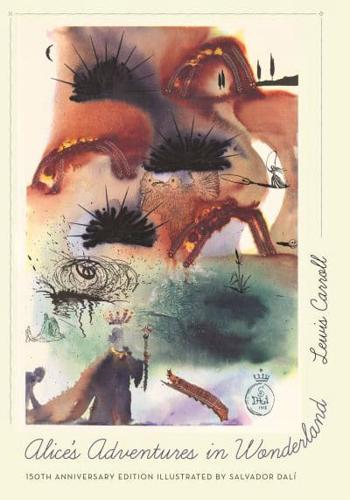Chapter 1: Down the Rabbit Hole
The story begins with Alice, a young girl, sitting alongside her sister on a riverbank. Bored by her sister's book, she spots a white rabbit with a pocket watch darting by. Curious, she follows the rabbit into a hole and begins her journey into Wonderland.
Real Example: This chapter represents the beginning of Alice's journey into the unknown, much like when someone first sets off on a new path in their life. For example, a college graduate may feel like Alice as they embark on their first job search or begin living on their own for the first time. They may feel a mix of curiosity and uncertainty as they navigate through unfamiliar territory.
Chapter 2: The Pool of Tears
After falling down the rabbit hole, Alice finds herself in a room filled with tiny doors. She comes across a bottle with a note that directs her to drink from it, causing her to grow and shrink. She eventually cries and creates a pool of tears, which turns into a sea. She then meets a mouse and together they swim to shore.
Real Example: This chapter showcases the unpredictability and challenges that one may face on their journey. Like Alice, sometimes we may feel small and powerless, while other times we may seem larger than life. The pool of tears can symbolize the emotional ups and downs that come with new experiences, and the mouse can represent the unexpected allies we may meet along the way.
Chapter 3: The Caucus Race and a Long Tale
Alice meets several different animals who are all wet from the sea and they begin a Caucus race to dry off, which has no clear winner. Afterwards, Dodo bird, who organized the race, tells a long, drawn-out story that bores Alice.
Real Example: This chapter represents the bureaucracy and pointless activities that one may encounter on their journey. The Caucus race can symbolize the lack of direction and chaos in certain situations, while the tedious story from the Dodo bird can represent the unnecessary obstacles and delays that can hinder progress.
Chapter 4: The Rabbit Sends in a Little Bill
Alice meets a White Rabbit who mistakes her for his maid and orders her to fetch his gloves and fan from his house. She finds the house and encounters a lizard named Bill. She brings back the items, but they change sizes and cause chaos, eventually leading to Alice being expelled from the house.
Real Example: This chapter highlights the concept of expectations and how they can be misguided. The White Rabbit's assumption that Alice is his maid shows that he is not seeing her for who she truly is. In the same way, others may have expectations for us based on their own biases or assumptions, which can lead to misunderstandings and chaos.
Chapter 5: Advice from a Caterpillar
Alice comes across a Caterpillar sitting on a mushroom, smoking a hookah. The Caterpillar asks Alice who she is, and she struggles to answer as her size keeps changing. The Caterpillar gives her confusing and contradictory advice before turning into a butterfly and flying away.
Real Example: This chapter highlights the struggles of finding one's own identity amidst conflicting advice and feedback from others. Like Alice, we may struggle to define ourselves as our circumstances and surroundings change. The Caterpillar's vague and contradictory advice can also mirror the confusing and conflicting guidance we may receive from different sources.
Chapter 6: Pig and Pepper
Alice comes across a Cheshire Cat and a Duchess' house, where the cook is throwing dishes and the baby is turning into a pig. The Cheshire Cat leads Alice to the Duchess, who is constantly fighting with her baby and the Duchess' behaviour confuses Alice.
Real Example: This chapter shows how confusing and chaotic relationships and interactions with others can be. The Duchess' erratic behavior and the baby turning into a pig can represent the unpredictable and often nonsensical nature of human relationships. Moreover, the Cheshire Cat's ability to disappear and reappear can symbolize the fleeting nature of connections with others.
Chapter 7: A Mad Tea-Party
Alice comes across a table set for a tea party with the Hatter, the March Hare, and the Dormouse. They are all stuck in perpetual tea time, and their nonsensical conversation and behavior leave Alice feeling frustrated.
Real Example: This chapter represents the difficulties of communication and trying to fit in with a group. The Hatter, March Hare, and Dormouse all have different perspectives and ways of speaking, causing confusion and discomfort for Alice. Like Alice, we may struggle to understand or connect with others who have different backgrounds and ways of thinking.
Chapter 8: The Queen's Croquet-Ground
Alice arrives at the Queen's croquet game, where the players are using flamingos as mallets and hedgehogs as balls. The Queen is quick to anger and constantly orders for executions for the slightest offenses. Alice's encounter with the Cheshire Cat at the end leads her to wake up from her dream.
Real Example: This chapter showcases the chaos and absurdity of rules and authority. The Queen's extreme reactions and unjust punishments reflect the unjust systems and hierarchies in society. The use of unconventional items in the croquet game also represents the need to conform to societal norms and expectations, even if they may seem ridiculous.
Chapter 9: And What Alice Found There
Alice wakes up from her dream back on the riverbank, her sister waking up from her nap as well. Alice reflects on her adventure and wonders if it was all just a dream.
Real Example: This final chapter represents the idea of self-reflection and questioning reality. As Alice tries to make sense of her dream-like journey, readers may also ask themselves about the meaning and purpose of their own experiences. It also highlights the blur between dreams and reality, and how sometimes what we perceive as real may actually be just a figment of our imagination.







